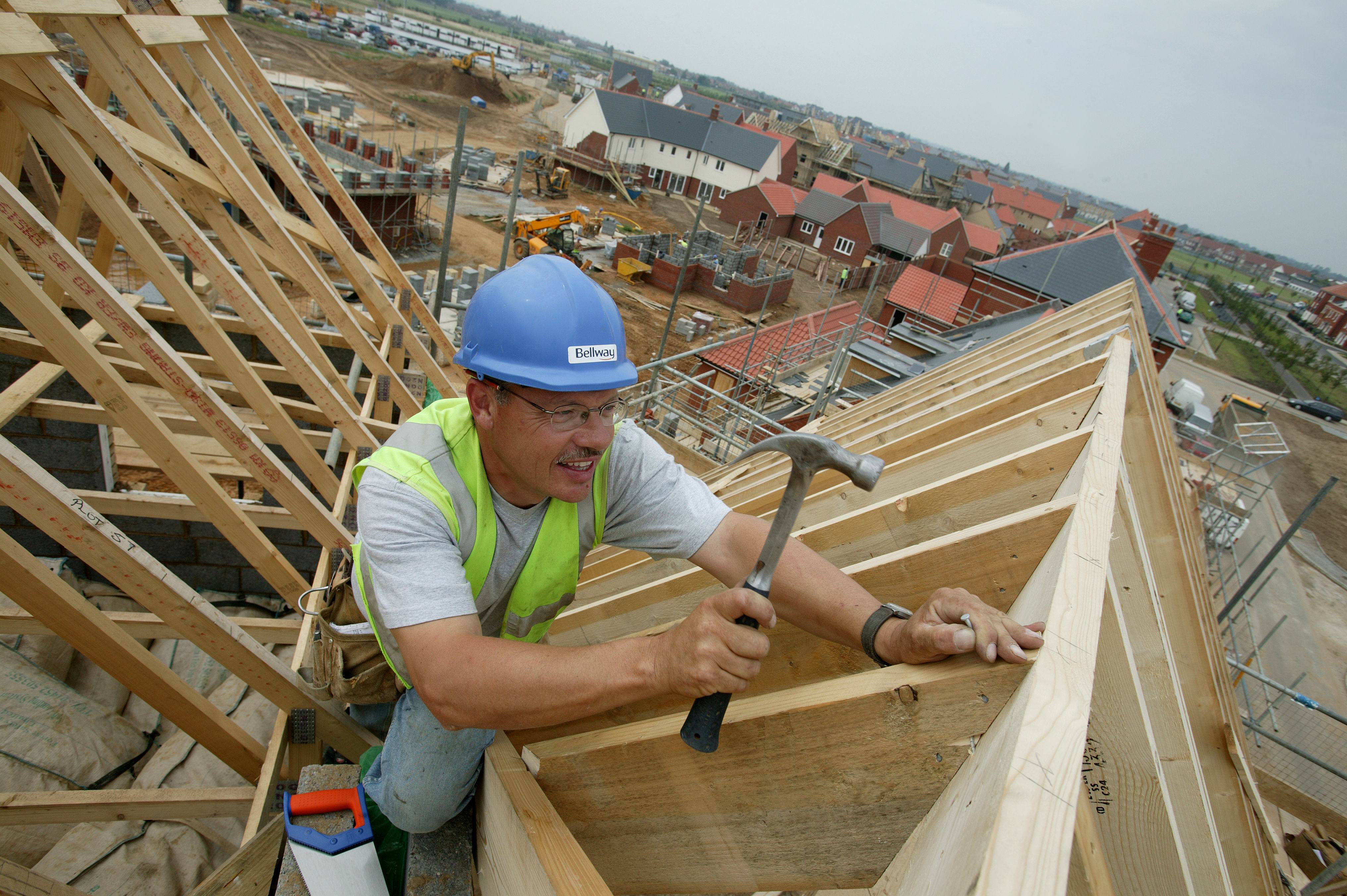Construction output continues to decline at sharp pace

Challenging business conditions within the UK construction sector persisted during October with business activity falling for the second month running amid a lack of new work to replace completed projects, according to new figures.
Respondents to the S&P Global / CIPS UK Construction PMI survey cited fragile client confidence and elevated borrowing costs as reasons for weaker sales.
Improving supply conditions and falling demand contributed to a renewed decline in purchasing prices. Moreover, the latest decline in input costs was the steepest since August 2009. Reduced workloads also led to a decline in sub-contractor charges for the first time in over three years.
At 45.6 in October, the headline S&P Global / CIPS UK Construction Purchasing Managers’ Index (PMI) was up slightly from 45.0 in September. However, it was still the second-lowest reading since May 2020 and signalled a marked decline in total construction activity.
House building decreased for the eleventh successive month in October and at a much steeper pace than elsewhere in the construction sector (index at 38.5). Falling work on residential construction projects was widely linked to a lack of demand and subsequent cutbacks to new projects.
Civil engineering activity also decreased sharply in October (index at 43.7) and the rate of decline was the fastest since July 2022. Meanwhile, there were signs of stabilisation in
the commercial; building segment, with activity falling only marginally and at a slower pace than in September (index at 49.5).
Total new work fell for the third month running in October and the rate of contraction was the joint-sharpest since May 2020. Survey respondents widely commented on a lack of tender opportunities and lengthier decision-making among clients due to concerns about the broader economic outlook.
Worries about shrinking pipelines of construction work contributed to a moderation in business confidence for the third successive month in October. Around 37% of the survey panel forecast a rise in business activity during the year ahead, while 19% predict a decline. The degree of optimism signalled by the survey in October was the lowest so far this year. A number of firms commented on particular weakness in the house building sector and an ongoing headwind from higher interest rates.
October data also pointed to a slowdown in job creation to its weakest since June, alongside another decline in purchasing activity, which mostly reflected a downturn in forthcoming projects starts.
Softer demand for construction products and materials resulted in pressure on suppliers for price discounts. The latest survey indicated that overall purchasing prices decreased at the fastest pace for over 14 years as lower timber, steel and transportation costs were passed on by vendors.
Adding to signs of spare capacity across the construction sector, latest data highlighted another strong rise in the availability of sub-contractors. Moreover, rates charged by sub-contractors fell for the first time since July 2020.
Tim Moore, economics director at S&P Global Market Intelligence, which compiles the survey said: “October data highlighted another solid reduction in UK construction output as elevated borrowing costs and a wait-and-see approach to new projects weighed on activity. House building decreased for the eleventh month running and once again saw a much steeper downturn than other parts of the construction sector. There were signs of stabilisation in the commercial building segment, however, with output falling only slightly since September.
“Total new work continued to fall more quickly than at any time since the initial pandemic lockdown period, which contributed to shrinking demand for construction products and materials during October. Competitive pressure on suppliers to pass on lower commodity prices resulted in the fastest decline in input costs since August 2009. Sub-contractors meanwhile cut their charges for the first time in more than three years in response to a further downturn in workloads during October.”
Dr John Glen, chief economist at the Chartered Institute of Procurement & Supply (CIPS), said: “High interest rates and low consumer demand for new homes continue to drag down the UK construction sector, with a lack of new tender opportunities and a cutback of existing projects being reported across the house building industry.
“The silver lining is that high borrowing costs are having their intended effect of putting the brakes on rising inflation. Previously suppliers were able to hike their prices in response to soaring demand. Falling construction activity has now tilted the negotiations in favour of buyers and suppliers are having to pass on lower prices for raw materials like timber and steel. Supply chain pressures are also easing as a result of the lull in new work, with better availability of raw materials, a reduction in transportation costs and an improvement in supplier delivery times. More subcontractors are available for work and some are reducing their prices in reaction to the falling demand.
“However, there is no doubt that UK construction is in a difficult period and there will likely be further challenging months to come. Despite commercial building activity continuing to fall there were signs of stabilisation within this sub-segment, and this may provide a glimmer of hope which the wider construction sector will keep a close eye on as we move into next year.”
Brian Smith, head of cost management and commercial at global infrastructure consultancy AECOM, said although tender price inflation and material costs are easing, wages and interest rates will continue to pile pressure on firms in the sector, which will keep project starts subdued.
“Another month of activity below the 50-point mark suggests contractors are expecting a difficult winter ahead,” he said.
“Housebuilding continues to be a drag on industry output which, given its size, the other sectors are seemingly no longer able to make up for.
“Our data suggests the rate tender price inflation and material costs have eased to lower levels, but wages continue to rise at around five per cent. Many firms have also yet to fully refinance their operations at new interest rates which will undoubtedly put pressure on working capital.
“Contractors looking to build their order books will find some solace in targeting retrofit and decarbonisation work but, more broadly, we would anticipate project starts and new orders remaining underwhelming into the New Year.”
Toby Banfield, financial restructuring partner at PwC UK, added: “Sector headwinds showed little signs of relief in October, as the PMI recorded 45.6 in October, a marginal increase from 45.0 in September but the second-lowest reading since May 2020, fuelled by an eleventh consecutive monthly decrease for house building which continues to battle with sales weak demand which is prompting delays and hesitance with new projects.
“PwC is forecasting a real overall decline in construction spend of -5% in 2023 before returning to growth in 2024 and 2025. This view is consistent with the PMI released today. New build construction output expectation varies by sector, with residential output most negatively affected with higher interest rates, whilst demand is expected to remain strong in infrastructure.
“The degree of optimism signalled by the survey in October was the lowest so far this year. In addition to the macroeconomic outlook, the drop in optimism may not be surprising, given there have been a number of high profile insolvencies across the sector in recent months. This can significantly impact developers who need to find alternative contractors to complete projects, normally at a substantially higher cost than envisaged in the original design and procurement phase.
“Increasingly, developers and major contractors are looking at the resilience of their supply chains and considering contingency plans in the event a key contractor was to fail, with a reduced focus on new build opportunities.”














